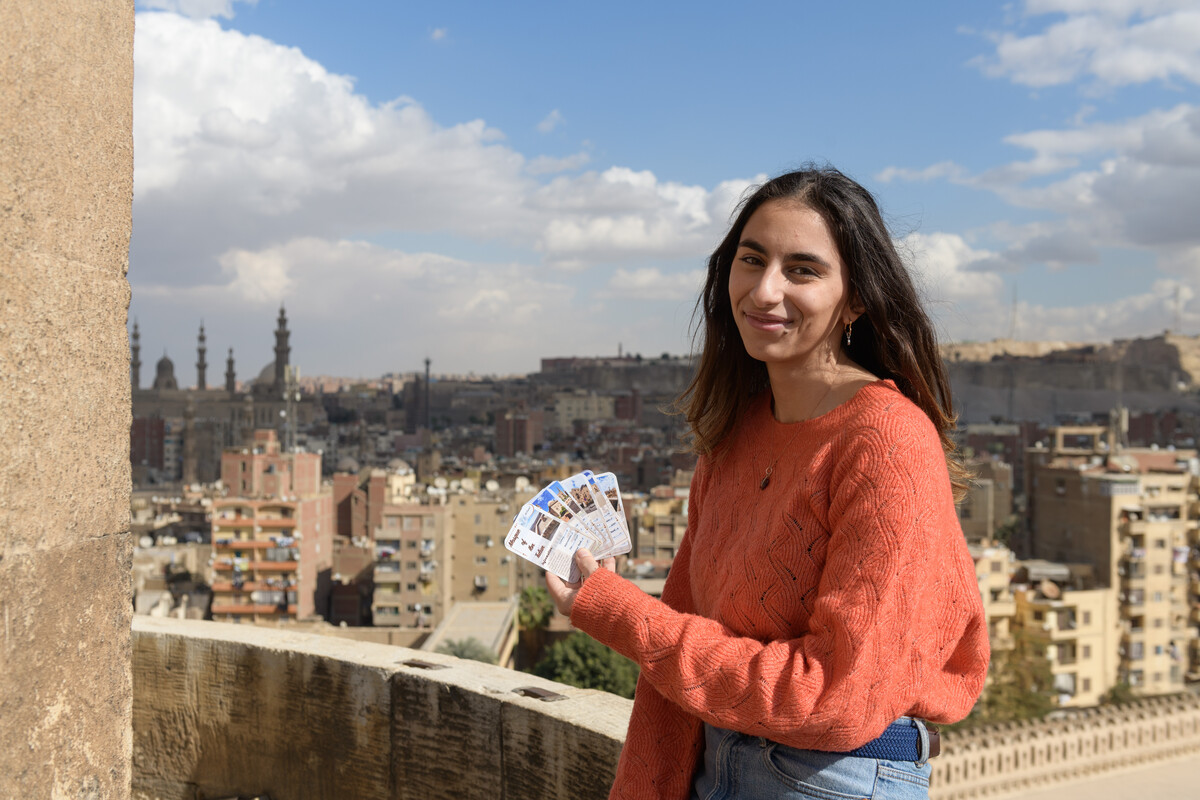By Claire Davenport
The educational card game Al Foora brings new meaning to the word "monumental." The game, created by AUC student Lena Boraei, teaches children about important antiquities, highlighting 30 significant landmarks in Cairo's Al Khalifa neighborhood.
Players compete by placing down the top card in their hand and comparing numerical categories about the monuments on their cards such as "size" and "century." The player with the highest number in a given category wins that round. Boraei, a history and graphic design junior, spent hours researching each building. She developed the deck as part of an internship with Athar Lina community initiative.
Athar Lina, which translates to "The monument is ours," is a conservation project that aims to engage citizens in preservation efforts and reframe monuments as community resources. Their programs are all geared toward creating a sense of ownership between Al Khalifa residents and their cultural heritage. The project is managed by Megawra - BEC, a partnership between Megawra, an architecture firm focusing on conservation and heritage management, and the Built Environment Collective, a cultural and urban development NGO.
Boraei was connected to Athar Lina for her History of Cairo class, taught by Pascale Ghazaleh '93, '97, associate professor and chair of AUC's Department of History. Through the course, Ghazaleh wanted to give students the chance to get out of the classroom and engage in current debates around preservation and tourism.
"A question that has fascinated me for a long time is, 'Who owns things that are supposed to belong to everyone?' I thought the students should be immersed in these conversations," Ghazaleh explained. "I want them to understand that the city is theirs too and that they are part of the struggles over its past and future."
Inside Khalifa
Boraei had the idea for Al Foora on a field trip to Al Khalifa with her class. She recounted seeing a shop in the neighborhood where they sold artisan products and games that reflected the history of the area. "I thought, 'Why not do it for monuments in the neighborhood and direct it toward children?'" she said. "They see these buildings every day but might not know anything about them."
Al Khalifa encompasses the area stretching from Ibn Tulun Mosque to the Al-Sayyida Nafisa shrine and contains monuments dating as far back as the ninth century. But despite being on UNESCO's World Heritage List, some antiquities in the neighborhood are at risk of demolition or degradation.
"There is a problem there with sewers, and the water is starting to erode buildings from the ground up," Boraei explained. "Some could collapse."
Additionally, neighborhood residents can have complicated relationships with the nearby monuments. While these landmarks have the potential to generate income, shape local identity and function as community hubs, residents often lack control over the maintenance of these spaces and the potential impact of tourism on both themselves and the surrounding areas.
"These monuments are a part of their lives. People use them for prayer, commerce and other activities," Ghazaleh explained. "Having said
that, their sense of ownership is often at odds with the official discourse about preservation, which is oriented toward tourists." Games like Boraei's can raise awareness of these issues and enable children to connect with their heritage -- making sure these landmarks don't get lost in the shuffle.
Looking ahead, Boraei would love to make card games featuring monuments from other neighborhoods around Cairo. "I want to keep history exciting and show it to people in a more artistic format," she said.
More than anything, Boraei wants the game to be fun. "When people play it, I want them to take something from it and enjoy their day," she said. "Otherwise, it's just information about monuments, and that's less enticing."





